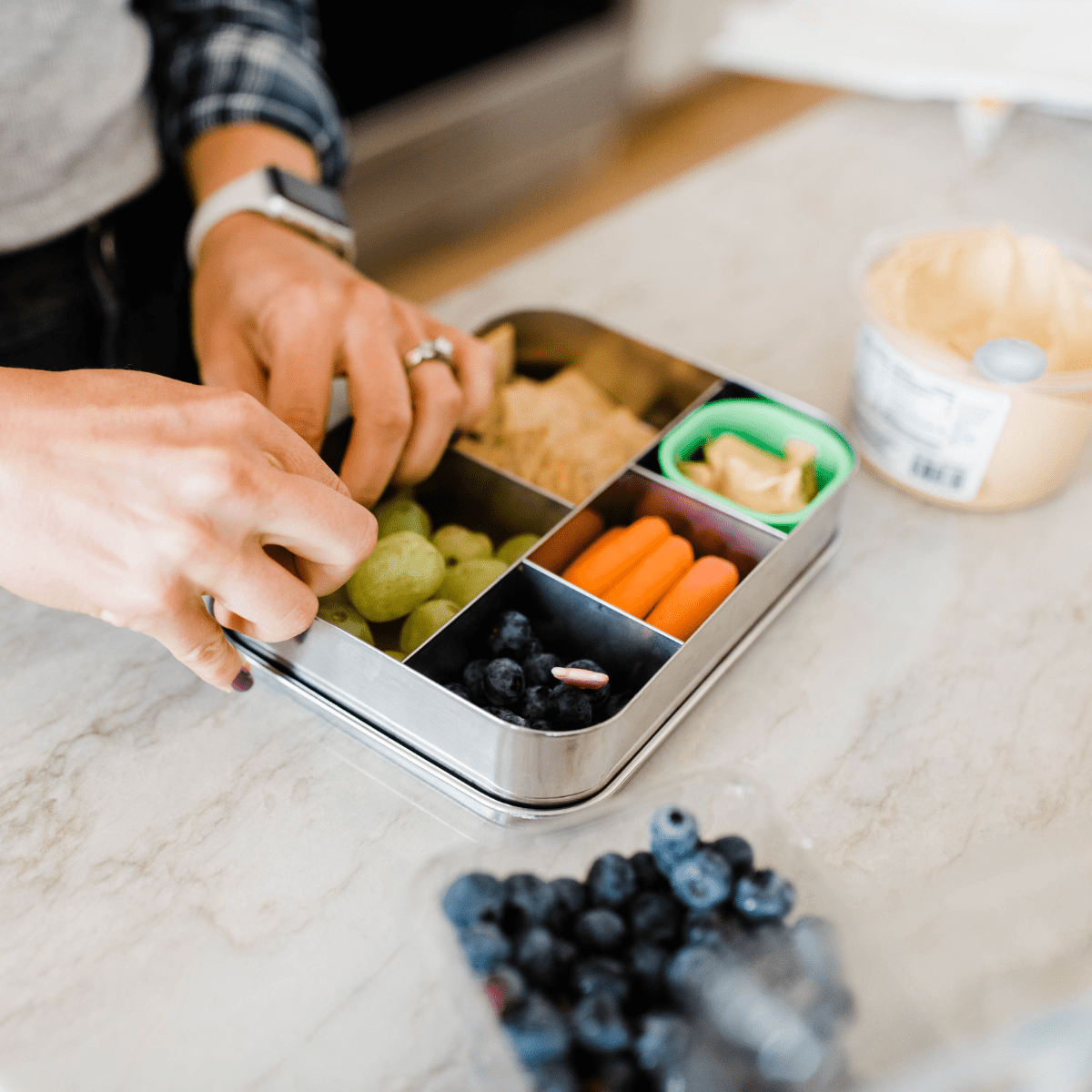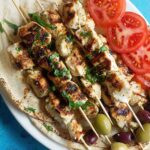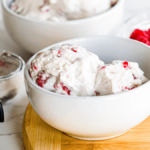Navigating a nut-free diet can feel like a culinary tightrope walk, especially when planning meals for the entire week. But fear not, fellow nut-free adventurers! This guide provides a vibrant roadmap to effortlessly create delicious and nutritious nut-free meals, from energizing breakfasts to satisfying dinners, all prepped in advance for a week of stress-free, allergy-safe eating. We’ll explore creative recipe ideas, smart storage techniques, and essential pantry staples, ensuring your meal prep journey is both simple and rewarding.
Imagine a week unfolding where healthy, flavorful meals are readily available, saving you precious time and energy without compromising on taste or dietary needs. This comprehensive guide equips you with the knowledge and strategies to conquer nut-free meal prepping, empowering you to enjoy a week of delicious, convenient, and allergy-conscious eating. We’ll cover everything from creating visually appealing infographics to optimizing your pantry for nut-free success.
Nut-Free Breakfast Meal Prep Ideas

Starting your day with a nutritious and delicious breakfast is crucial for sustained energy and overall well-being. Meal prepping nut-free breakfasts allows you to enjoy convenient, healthy options throughout the week, even with dietary restrictions. This section details three nut-free breakfast recipes perfect for meal prepping, along with a visual representation of their nutritional benefits and a comparative analysis of their preparation time and nutritional value.
Three Nut-Free Breakfast Recipes
Meal prepping breakfast is simple and efficient. These recipes are designed for ease of preparation and storage, ensuring a healthy and delicious start to each day. They are all naturally nut-free, eliminating the risk of cross-contamination.
| Name | Ingredients | Instructions | Notes |
|---|---|---|---|
| Overnight Oats with Berries and Seeds | 1/2 cup rolled oats, 1 cup milk (dairy or non-dairy), 1/4 cup mixed berries, 1 tablespoon chia seeds, 1 teaspoon honey or maple syrup (optional) | Combine oats, milk, berries, chia seeds, and sweetener (if using) in a jar or container. Stir well and refrigerate overnight. | Can be customized with different fruits and seeds. Adjust sweetness to preference. |
| Savory Egg Muffins with Spinach and Feta | 6 eggs, 1 cup chopped spinach, 1/2 cup crumbled feta cheese, 1/4 cup chopped bell pepper, salt and pepper to taste | Preheat oven to 350°F (175°C). Whisk eggs with salt and pepper. Mix in spinach, feta, and bell pepper. Pour mixture into greased muffin tin. Bake for 15-20 minutes, or until set. | Feta can be substituted with other nut-free cheeses. Add other vegetables as desired. |
| Banana Pancakes (Nut-Free) | 2 ripe bananas, 2 eggs, 1/2 cup whole wheat flour, 1 teaspoon baking powder, 1/4 teaspoon cinnamon, pinch of salt | Mash bananas. Whisk in eggs, flour, baking powder, cinnamon, and salt until smooth. Cook pancakes on a lightly oiled griddle over medium heat until golden brown on both sides. | Can be topped with fruit, yogurt, or a drizzle of maple syrup. Adjust flour quantity for desired consistency. |
Nutritional Infographic
The infographic is designed as a tri-fold brochure, with each panel dedicated to one of the breakfast recipes. The background color scheme utilizes soft, earthy tones: a light beige for the overall background, accented with muted greens and blues.
Panel 1: Overnight Oats – This panel features a vibrant illustration of a mason jar filled with creamy oats, plump berries, and chia seeds. The jar is slightly tilted, giving a sense of freshness. The font used is a clean, sans-serif typeface like Arial or Calibri, in a size easily readable. Key nutritional information (fiber, antioxidants, omega-3s) is highlighted in a light green box.
Panel 2: Egg Muffins – This panel displays a close-up image of a golden-brown egg muffin, showcasing the vibrant green spinach and creamy feta cheese. The image is crisp and appetizing. The text uses the same font as Panel 1, but with a light blue accent color for highlighting protein and vitamin content.
Panel 3: Banana Pancakes – This panel shows a stack of fluffy banana pancakes, drizzled with a touch of maple syrup and garnished with fresh berries. The image is warm and inviting. The font remains consistent, with a light orange accent for highlighting potassium and carbohydrates. Each panel includes a small icon representing the main nutritional benefit (e.g., a fiber strand for oats, a muscle for egg muffins, a banana for pancakes).
Comparative Analysis of Preparation Time and Nutritional Value
The overnight oats require minimal preparation time (5 minutes) and offer high fiber and antioxidant content. The egg muffins take approximately 25 minutes to prepare and bake, providing a good source of protein and vitamins. The banana pancakes require about 15 minutes of preparation and cooking time and are rich in potassium and carbohydrates. While the overnight oats are the quickest to prepare, all three recipes provide a balanced nutritional profile, making them suitable for a healthy and convenient breakfast.
Essential Nut-Free Pantry Staples and Substitutions
Building a well-stocked, nut-free pantry is crucial for efficient and safe meal prepping. Having the right ingredients on hand minimizes the risk of accidental nut contamination and allows for quick assembly of delicious, healthy meals throughout the week. This section details essential staples and provides suitable nut-free alternatives for common recipes.
A well-organized nut-free pantry simplifies meal preparation and reduces stress. By proactively stocking these ingredients, you’ll be ready to create a variety of nut-free dishes without last-minute scrambling or compromising on taste.
Nut-Free Pantry Staples
This list Artikels essential ingredients for creating a diverse range of nut-free meals. Prioritizing these items will significantly enhance your meal prep efficiency and ensure you always have the building blocks for healthy, delicious meals.
- Grains: Quinoa, brown rice, oats (certified gluten-free if needed), whole wheat pasta, couscous. These provide the base for many meals, offering carbohydrates and fiber.
- Legumes: Dried lentils (red, green, brown), chickpeas, black beans, kidney beans. These are excellent sources of protein and fiber, perfect for adding to soups, salads, or as a standalone meal.
- Seeds: Sunflower seeds, pumpkin seeds, sesame seeds, flax seeds, chia seeds. These offer healthy fats, protein, and fiber, and can be used as a topping, in baking, or as a nutritious addition to salads.
- Vegetables: A wide variety of frozen or fresh vegetables – broccoli, carrots, peas, spinach, bell peppers. These are essential for adding vitamins, minerals, and vibrant color to your meals.
- Fruits: Fresh or frozen fruits – berries, bananas, apples, mangoes. Fruits provide natural sweetness, fiber, and essential vitamins and minerals.
- Oils: Olive oil, avocado oil, coconut oil. These are healthy fats crucial for cooking and adding flavor to your dishes.
- Spices and Herbs: A diverse collection of spices and herbs – cumin, turmeric, chili powder, oregano, basil. These add flavor and depth to your meals without relying on nut-based ingredients.
- Other: Soy sauce (tamari for gluten-free), nutritional yeast (for cheesy flavor), various broths (vegetable, chicken, beef). These are versatile additions that can enhance the flavor profiles of your meals.
Nut-Free Substitutions
Many recipes call for nuts, but there are plenty of delicious and healthy substitutes available. This section Artikels several common nut-based ingredients and their nut-free alternatives, ensuring your meal prep remains both nut-free and flavorful.
- Nut butters: Sunflower seed butter, tahini (sesame seed paste), pumpkin seed butter. These provide a creamy texture and rich flavor similar to nut butters.
- Nut flours: Oat flour, almond flour (ensure it’s made in a nut-free facility), coconut flour. These are used in baking and can be substituted for nut flours.
- Nut milks: Soy milk, oat milk, rice milk, coconut milk. These provide a creamy texture in smoothies, sauces, and other recipes.
Avoiding Cross-Contamination and Proper Labeling
Preventing cross-contamination is crucial when meal prepping nut-free meals, especially for individuals with severe allergies. Proper labeling and storage are essential steps in ensuring food safety and preventing accidental consumption.
To avoid cross-contamination, designate specific cutting boards, utensils, and cookware for nut-free preparation. Thoroughly clean and sanitize all surfaces and equipment before and after use. Avoid preparing nut-containing foods in the same area or at the same time as nut-free meals.
Clearly label all containers with the contents and the date of preparation. Use permanent markers and label both the container and the lid. Consider using colored labels or stickers to quickly identify nut-free items. Store nut-free meals separately from other foods, preferably in airtight containers to maintain freshness and prevent contamination. Refrigerate or freeze meals according to their specific storage requirements.
Nut-Free Snack and Dessert Recipes for Meal Prep
Planning ahead with nut-free snacks and desserts ensures you always have healthy and delicious options readily available, preventing impulsive unhealthy choices. This is especially important for individuals with nut allergies or those following a nut-free diet. These recipes are designed to be easy to prepare in batches and stored for the week.
Three Nut-Free Snack and Dessert Recipes
These recipes offer a variety of flavors and textures, perfect for satisfying different cravings throughout the week. They are designed for easy meal prepping and are naturally nut-free.
- Banana Nice Cream: This frozen dessert is incredibly simple, requiring only ripe bananas. Peel and slice three ripe bananas and place them in a freezer-safe container. Freeze for at least 4 hours, or until solid. Once frozen, add the bananas to a food processor and blend until smooth and creamy, scraping down the sides as needed. For added flavor, consider adding a teaspoon of vanilla extract or a dash of cinnamon during blending. The resulting creamy texture resembles ice cream without the need for any dairy or nuts.
- Oatmeal Energy Bites: These no-bake bites provide sustained energy and are highly customizable. Combine 1 cup rolled oats, ½ cup unsweetened shredded coconut, ¼ cup sunflower seeds, 2 tablespoons chia seeds, 2 tablespoons maple syrup, and 1 tablespoon melted coconut oil in a bowl. Mix thoroughly until all ingredients are well combined. Roll the mixture into small balls (approximately 1 inch in diameter) and place them on a parchment-lined baking sheet. Refrigerate for at least 30 minutes to firm up. These can be varied with additions like dried cranberries, chocolate chips (ensure nut-free), or spices.
- Fruit and Yogurt Parfaits: A refreshing and light dessert or snack, these parfaits are packed with vitamins and probiotics. Layer your favorite fruits (berries, sliced apples, grapes) with plain, nut-free yogurt in individual glasses or containers. You can also add a sprinkle of granola (ensure nut-free) for added texture and crunch. The layers create a visually appealing treat that’s easy to prepare and transport.
Importance of Portion Control and Mindful Snacking
Portion control and mindful snacking are crucial for maintaining a healthy diet, even when meal prepping. Pre-portioning snacks into individual containers helps prevent overeating and promotes awareness of consumption. Mindful snacking involves paying attention to hunger cues, savoring each bite, and choosing nutrient-rich options. This prevents mindless snacking and promotes better digestion and overall health. For example, instead of eating a large bowl of banana nice cream, portion it into individual serving sizes for easier control. Similarly, pre-portioning the energy bites into small containers ensures you consume a controlled amount.
Weekly Nut-Free Meal Prep Schedule
This schedule provides a sample plan for incorporating the nut-free recipes into a balanced weekly diet. Adjust portion sizes and recipes to fit individual needs and preferences.
| Day | Breakfast | Lunch | Dinner & Snacks |
|---|---|---|---|
| Monday | Overnight Oats (with sunflower seeds and berries) | Leftover Chicken and Vegetable Stir-fry | Banana Nice Cream |
| Tuesday | Smoothie (with fruit and nut-free milk) | Salad with chickpeas and sunflower seeds | Oatmeal Energy Bites |
| Wednesday | Yogurt with fruit and granola (nut-free) | Leftover Lentil Soup | Fruit and Yogurt Parfait |
| Thursday | Overnight Oats (with sunflower seeds and berries) | Quinoa salad with roasted vegetables | Banana Nice Cream |
| Friday | Smoothie (with fruit and nut-free milk) | Leftover Chicken and Vegetable Stir-fry | Oatmeal Energy Bites |
| Saturday | Scrambled eggs with spinach | Leftover Quinoa salad | Fruit and Yogurt Parfait |
| Sunday | Pancakes (nut-free recipe) | Leftover Lentil Soup | Banana Nice Cream |
Mastering the art of nut-free meal prepping opens a world of culinary possibilities, transforming your weekly routine from a chaotic scramble to a well-orchestrated symphony of flavor and convenience. By embracing the strategies and recipes Artikeld in this guide, you’ll not only simplify your week but also elevate your culinary game, creating a consistently healthy and enjoyable eating experience, free from the worry of accidental nut exposure. So, roll up your sleeves, gather your ingredients, and embark on a week of delicious, nut-free culinary adventures!
Q&A
What if I accidentally use a nut-contaminated utensil?
Thoroughly wash and sanitize all utensils and surfaces before preparing nut-free meals to prevent cross-contamination.
How long can I store prepped nut-free meals in the refrigerator?
Most nut-free meals can be stored in the refrigerator for 3-5 days, but always check individual recipe instructions for specific guidelines.
Are all nut-free recipes automatically gluten-free?
No, nut-free does not automatically mean gluten-free. Always check ingredient lists for gluten-containing ingredients like wheat, barley, or rye.
Can I freeze nut-free meal prepped items?
Yes, many nut-free meals freeze well. Properly label and date all frozen items for optimal quality and safety.


